Brain Pickings has a free weekly interestingness digest. It comes out on Sundays and offers excellent articles from the week. The original article can be read at http://www.brainpickings.org/index.php/2013/09/06/what-is-creativity/
Bradbury, Eames, Angelou, Gladwell, Einstein, Byrne, Duchamp, Close, Sendak, and more.
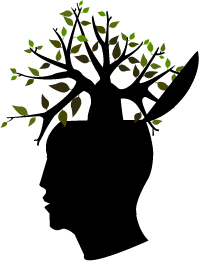 “Creativity” is one of those grab-bag
terms, like “happiness” and “love,” that can mean so many things it runs
the risk of meaning nothing at all. And yet some of history’s greatest
minds have attempted to capture, explain, describe, itemize, and dissect
the nature of creativity. After similar omnibi of cultural icons’ most
beautiful and articulate definitions of
art, of
science, and of
love, here comes one of creativity.
“Creativity” is one of those grab-bag
terms, like “happiness” and “love,” that can mean so many things it runs
the risk of meaning nothing at all. And yet some of history’s greatest
minds have attempted to capture, explain, describe, itemize, and dissect
the nature of creativity. After similar omnibi of cultural icons’ most
beautiful and articulate definitions of
art, of
science, and of
love, here comes one of creativity.For Ray Bradbury, creativity was the art of muting the rational mind:
The intellect is a great danger to creativity … because you begin to rationalize and make up reasons for things, instead of staying with your own basic truth — who you are, what you are, what you want to be. I’ve had a sign over my typewriter for over 25 years now, which reads “Don’t think!” You must never think at the typewriter — you must feel. Your intellect is always buried in that feeling anyway. … The worst thing you do when you think is lie — you can make up reasons that are not true for the things that you did, and what you’re trying to do as a creative person is surprise yourself — find out who you really are, and try not to lie, try to tell the truth all the time. And the only way to do this is by being very active and very emotional, and get it out of yourself — making things that you hate and things that you love, you write about these then, intensely.Long before he was became the artist we know and love, a young Maurice Sendak full of self-doubt wrote in a letter to his editor, the remarkable Ursula Nordstrom:
Knowledge is the driving force that puts creative passion to work.In writing back, Nordstrom responded with her signature blend of wisdom and assurance:
That is the creative artist — a penalty of the creative artist — wanting to make order out of chaos.Bill Moyers is credited with having offered a sort of mirror-image definition that does away with order and seeks, instead, magical chaos:
Creativity is piercing the mundane to find the marvelous.For Albert Einstein, its defining characteristic was what he called “combinatory play”. In a letter to a French mathematician, included in Einstein’s Ideas and Opinions (public library), he writes:
The words or the language, as they are written or spoken, do not seem to play any role in my mechanism of thought. The psychical entities which seem to serve as elements in thought are certain signs and more or less clear images which can be “voluntarily” reproduced and combined.For Maya Angelou, a modern-day sage of the finest kind, the mystery and miracle of creativity is in its self-regenerating nature. In the excellent collection Conversations with Maya Angelou (public library), which also gave us her poignant exchange with Bill Moyers, Angelou says:
There is, of course, a certain connection between those elements and relevant logical concepts. It is also clear that the desire to arrive finally at logically connected concepts is the emotional basis of this rather vague play with the above-mentioned elements. But taken from a psychological viewpoint, this combinatory play seems to be the essential feature in productive thought — before there is any connection with logical construction in words or other kinds of signs which can be communicated to others.
Creativity or talent, like electricity, is something I don’t understand but something I’m able to harness and use. While electricity remains a mystery, I know I can plug into it and light up a cathedral or a synagogue or an operating room and use it to help save a life. Or I can use it to electrocute someone. Like electricity, creativity makes no judgment. I can use it productive or destructively. The important thing is to use it. You can’t use up creativity. The more you use it, the more you have.Tom Bissell, writing in Magic Hours: Essays on Creators and Creation, also celebrates this magical quality of creativity:
To create anything … is to believe, if only momentarily, you are capable of magic. … That magic … is sometimes perilous, sometimes infectious, sometimes fragile, sometimes failed, sometimes infuriating, sometimes triumphant, and sometimes tragic.But there might be something more precise and less mystical about the creative process. In Uncommon Genius: How Great Ideas Are Born (public library), the fantastic collection of interviews with MacArthur “genius” grantees by Denise Shekerjian, she recapitulates her findings:
The trick to creativity, if there is a single useful thing to say about it, is to identify your own peculiar talent and then to settle down to work with it for a good long time.Shekerjian interviews the late Stephen Jay Gould, arguably the best science writer of all time, who describes his own approach to creativity as the art of making connections, which Shekerjian synthesizes:
Gould’s special talent, that rare gift for seeing the connections between seemingly unrelated things, zinged to the heart of the matter. Without meaning to, he had zeroed in on the most popular of the manifold definitions of creativity: the idea of connecting two unrelated things in an efficient way. The surprise we experience at such a linkage brings us up short and causes us to think, Now that’s creative.This notion, of course, is not new. In his timelessly insightful 1939 treatise A Technique for Producing Ideas (public library), outlining the five stages of ideation, James Webb Young asserts:
An idea is nothing more nor less than a new combination of old elements [and] the capacity to bring old elements into new combinations depends largely on the ability to see relationships. The habit of mind which leads to a search for relationships between facts becomes of the highest importance in the production of ideas.Three years later, in 1942, Rosamund Harding added another dimension of stressing the importance of cross-disciplinary combinations in wonderful out-of-print tome An Anatomy of Inspiration:
Originality depends on new and striking combinations of ideas. It is obvious therefore that the more a man knows the greater scope he has for arriving at striking combinations. And not only the more he knows about his own subject but the more he knows beyond it of other subjects. It is a fact that has not yet been sufficiently stressed that those persons who have risen to eminence in arts, letters or sciences have frequently possessed considerable knowledge of subjects outside their own sphere of activity.Seven decades later, Phil Beadle echoes this concept in his wonderful blueprint field guide to creativity, Dancing About Architecture: A Little Book of Creativity (public library):
It is the ability to spot the potential in the product of connecting things that don’t ordinarily go together that marks out the person who is truly creative.Steve Jobs famously articulated this notion and took it a step further, emphasizing the importance of building a rich personal library of experiences and ideas to connect:
Creativity is just connecting things. When you ask creative people how they did something, they feel a little guilty because they didn’t really do it, they just saw something. It seemed obvious to them after a while. That’s because they were able to connect experiences they’ve had and synthesize new things. And the reason they were able to do that was that they’ve had more experiences or they have thought more about their experiences than other people. Unfortunately, that’s too rare a commodity. A lot of people in our industry haven’t had very diverse experiences. So they don’t have enough dots to connect, and they end up with very linear solutions without a broad perspective on the problem. The broader one’s understanding of the human experience, the better design we will have.Musician Amanda Palmer puts this even more poetically in her meditation on dot-connecting and creativity:
We can only connect the dots that we collect, which makes everything you write about you. … Your connections are the thread that you weave into the cloth that becomes the story that only you can tell.Beloved graphic designer Paula Scher has a different metaphor for the same concept. In Debbie Millman’s How to Think Like a Great Graphic Designer (UK; public library), she likens creativity to a slot machine:
There’s a certain amount of intuitive thinking that goes into everything. It’s so hard to describe how things happen intuitively. I can describe it as a computer and a slot machine. I have a pile of stuff in my brain, a pile of stuff from all the books I’ve read and all the movies I’ve seen. Every piece of artwork I’ve ever looked at. Every conversation that’s inspired me, every piece of street art I’ve seen along the way. Anything I’ve purchased, rejected, loved, hated. It’s all in there. It’s all on one side of the brain.But Arthur Koestler, in his seminal 1964 anatomy of creativity, The Act Of Creation (public library), argues that besides connection, the creative act necessitates contrast, or what he termed “bisociation”:
And on the other side of the brain is a specific brief that comes from my understanding of the project and says, okay, this solution is made up of A, B, C, and D. And if you pull the handle on the slot machine, they sort of run around in a circle, and what you hope is that those three cherries line up, and the cash comes out.
The pattern underlying [the creative act] is the perceiving of a situation or idea in two self-consistent but habitually incompatible frames of references. The event, in which the two intersect, is made to vibrate simultaneously on two different wavelengths, as it were. While this unusual situation lasts, [the event] is not merely linked to one associative context, but bisociated with two.He differentiated between cognitive habit, or merely associative thought, and originality, or bisociative ideation, thusly:
I have coined the term ‘bisociation’ in order to make a distinction between the routine skills of thinking on a single ‘plane,’ as it were, and the creative act, which … always operates on more than one plane. The former can be called single-minded, the latter double-minded, transitory state of unstable equilibrium where the balance of both emotion and thought is disturbed.
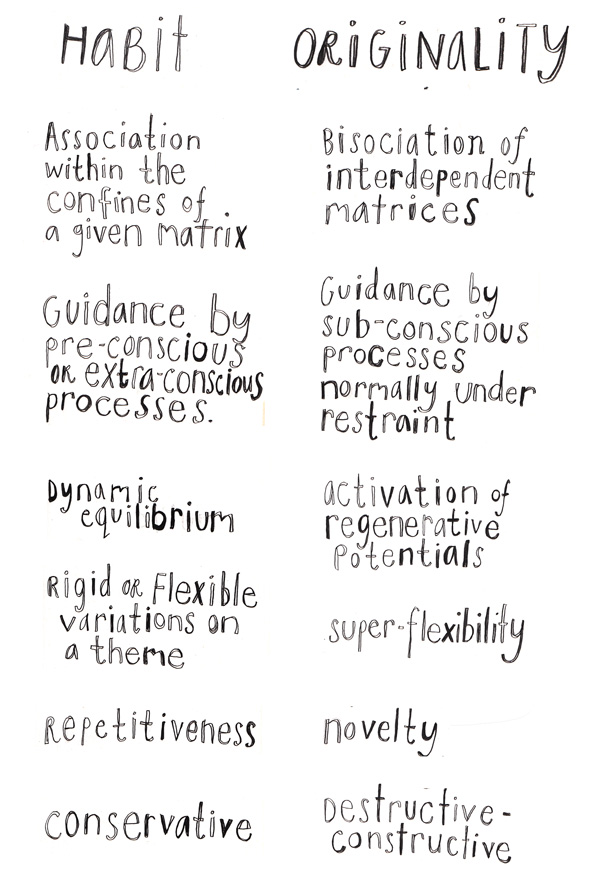
Twenty years later, creative icon and original Mad Man George Lois echoed Koestler in his influential tome The Art of Advertising: George Lois on Mass Communication (public library):
Creativity can solve almost any problem. The creative act, the defeat of habit by originality, overcomes everything.For Gretchen Rubin, however, habit isn’t the enemy of creativity but its engine. In Manage Your Day-to-Day: Build Your Routine, Find Your Focus, and Sharpen Your Creative Mind, she writes:
Anthony Trollope, the nineteenth-century writer who managed to be a prolific novelist while also revolutionizing the British postal system, observed, “A small daily task, if it be really daily, will beat the labours of a spasmodic Hercules.” Over the long run, the unglamorous habit of frequency fosters both productivity and creativity.In 1926, English social psychologist and London School of Economics co-founder Graham Wallas penned The Art of Thought, laying out his theory for how creativity works. Its gist, preserved in the altogether indispensable The Creativity Question (public library), identifies the four stages of the creative process — preparation, incubation, illumination, and verification — and their essential interplay:
[…]
You’re much more likely to spot surprising relationships and to see fresh connections among ideas, if your mind is constantly humming with issues related to your work. … By contrast, working sporadically makes it hard to keep your focus. It’s easy to become blocked, confused, or distracted, or to forget what you were aiming to accomplish.
[…]
Creativity arises from a constant churn of ideas, and one of the easiest ways to encourage that fertile froth is to keep your mind engaged with your project. When you work regularly, inspiration strikes regularly.
In the daily stream of thought these four different stages constantly overlap each other as we explore different problems. An economist reading a Blue Book, a physiologist watching an experiment, or a business man going through his morning’s letters, may at the same time be “incubating” on a problem which he proposed to himself a few days ago, be accumulating knowledge in “preparation” for a second problem, and be “verifying” his conclusions on a third problem. Even in exploring the same problem, the mind may be unconsciously incubating on one aspect of it, while it is consciously employed in preparing for or verifying another aspect. And it must always be remembered that much very important thinking, done for instance by a poet exploring his own memories, or by a man trying to see clearly his emotional relation to his country or his party, resembles musical composition in that the stages leading to success are not very easily fitted into a “problem and solution” scheme. Yet, even when success in thought means the creation of something felt to be beautiful and true rather than the solution of a prescribed problem, the four stages of Preparation, Incubation, Illumination, and the Verification of the final result can generally be distinguished from each other.But Malcolm Gladwell, in reflecting on the legacy of legendary economist Albert O. Hirscham in his review of Worldly Philosopher: The Odyssey of Albert O. Hirschman, doesn’t think the creative process is so deliberate:
Creativity always comes as a surprise to us; therefore we can never count on it and we dare not believe in it until it has happened. In other words, we would not consciously engage upon tasks whose success clearly requires that creativity be forthcoming. Hence, the only way in which we can bring our creative resources fully into play is by misjudging the nature of the task, by presenting it to ourselves as more routine, simple, undemanding of genuine creativity than it will turn out to be.But David Byrne is skeptical of this romantic notion that creativity is a purely subconscious muse that dances to its own mystical drum. In How Music Works (public library), one of the best music books of 2012, he writes:
I had an extremely slow-dawning insight about creation. That insight is that context largely determines what is written, painted, sculpted, sung, or performed. That doesn’t sound like much of an insight, but it’s actually the opposite of conventional wisdom, which maintains that creation emerges out of some interior emotion, from an upwelling of passion or feeling, and that the creative urge will brook no accommodation, that it simply must find an outlet to be heard, read, or seen. The accepted narrative suggests that a classical composer gets a strange look in his or her eye and begins furiously scribbling a fully realized composition that couldn’t exist in any other form. Or that the rock-and-roll singer is driven by desires and demons, and out bursts this amazing, perfectly shaped song that had to be three minutes and twelve seconds — nothing more, nothing less. This is the romantic notion of how creative work comes to be, but I think the path of creation is almost 180º from this model. I believe that we unconsciously and instinctively make work to fit preexisting formats.For John Cleese, creativity is neither a conscious plan of attack nor an unconscious mystery, but a mode of being. In his superb 1991 talk on the five factors of creativity, he asserts in his characteristic manner of laconic wisdom:
Of course, passion can still be present. Just because the form that one’s work will take is predetermined and opportunistic (meaning one makes something because the opportunity is there), it doesn’t mean that creation must be cold, mechanical, and heartless. Dark and emotional materials usually find a way in, and the tailoring process — form being tailored to fit a given context — is largely unconscious, instinctive. We usually don’t even notice it. Opportunity and availability are often the mother of invention.
Creativity is not a talent. It is a way of operating.In Inside the Painter’s Studio (public library), celebrated artist Chuck Close is even more exacting in his take on this “way of operating,” equating creativity with work ethic:
Inspiration is for amateurs — the rest of us just show up and get to work.In his short 1957 paper The Creative Act, French surrealist icon Marcel Duchamp considers the work of creativity a participatory project involving both creator and spectator:
The creative act is not performed by the artist alone; the spectator brings the work in contact with the external world by deciphering and interpreting its inner qualifications and thus adds his contribution to the creative act. This becomes even more obvious when posterity gives a final verdict and sometimes rehabilitates forgotten artists.Meanwhile, artist Austin Kleon, author of the wonderful Steal Like an Artist, celebrates the negative space of the creative act in his Newspaper Blackout masterpiece:
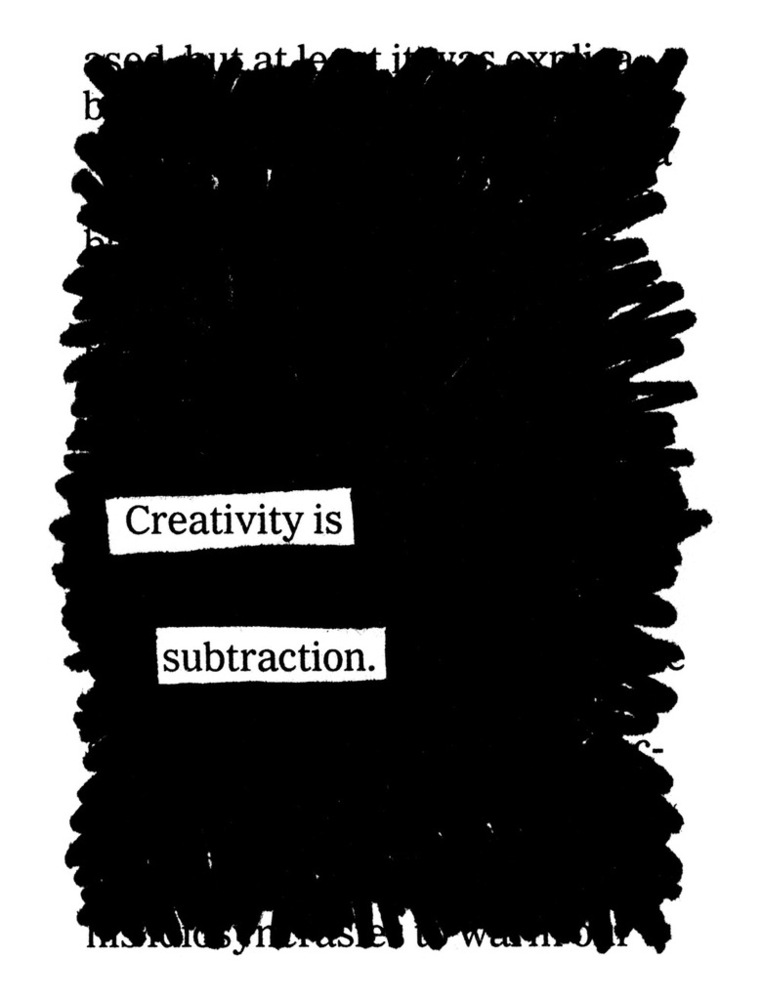
But perhaps, after all, we should heed Charles Eames’s admonition:
Recent years have shown a growing preoccupation with the circumstances surrounding the creative act and a search for the ingredients that promote creativity. This preoccupation in itself suggests that we are in a special kind of trouble — and indeed we are.
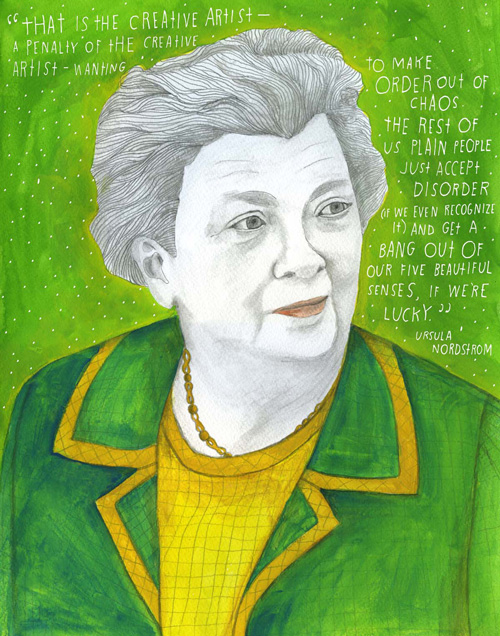
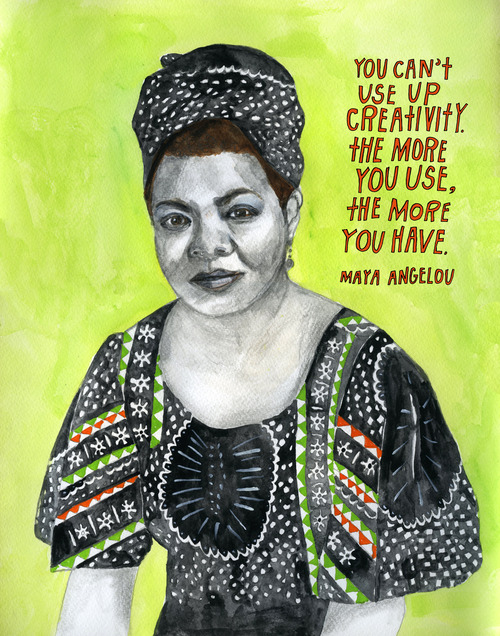



No comments:
Post a Comment